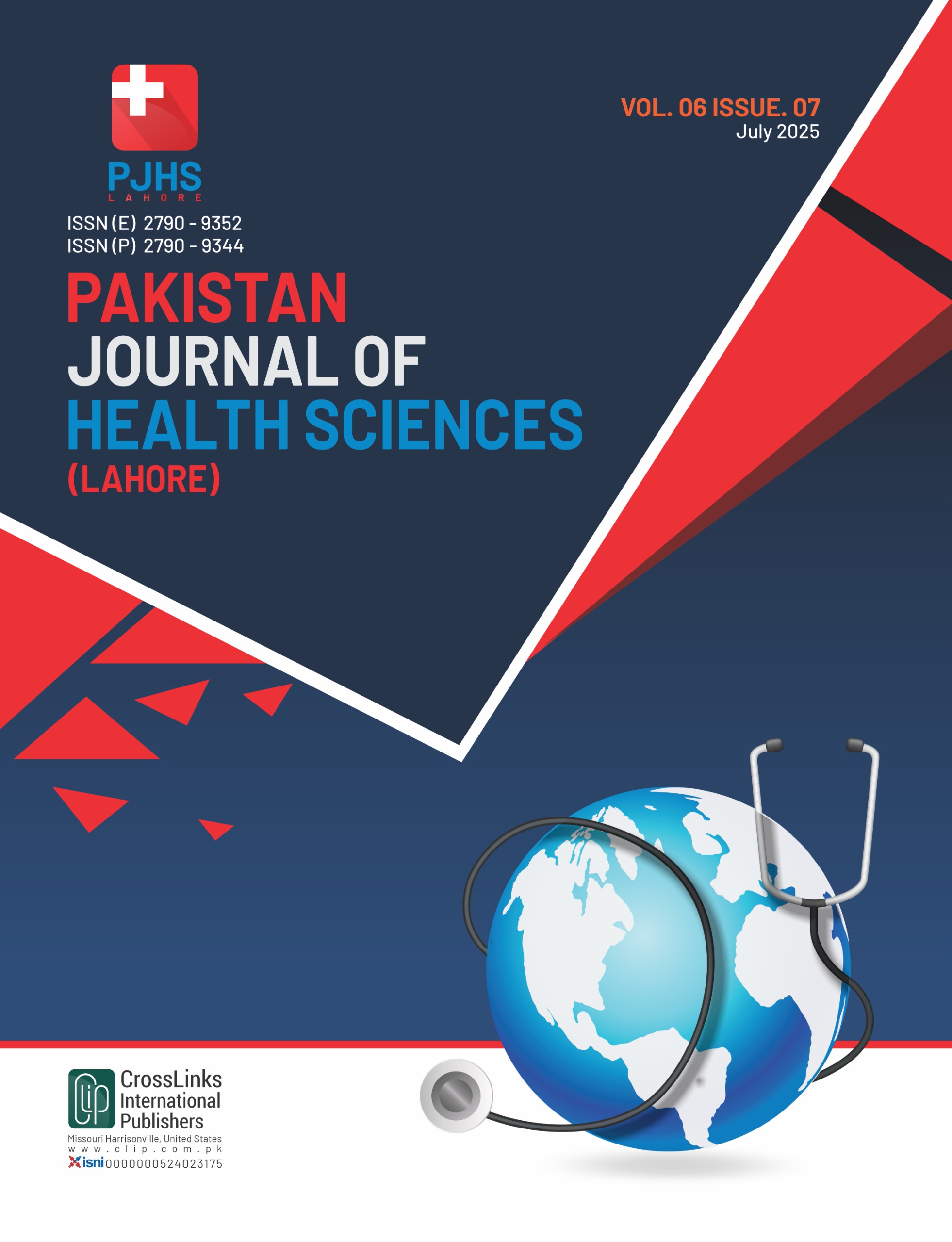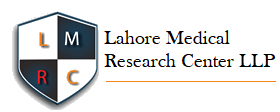Morphological Features and Ki67 Immunohistochemical Analysis in Trophoblastic Diseases: A Five-Year Retrospective Study
Ki67 Immunohistochemical Analysis in Trophoblastic Diseases
DOI:
https://doi.org/10.54393/pjhs.v6i7.3135Keywords:
Gestational Trophoblastic Disease, Hydatidiform Mole, Ki67 Proliferation Marker, ImmunohistochemistryAbstract
Gestational trophoblastic disorders (GTDs) are characterized by aberrant trophoblastic growth, with entire moles, partial moles, and hydropic abortions looking identical, making diagnosis difficult. Ki67 immunohistochemistry quantifies cellular proliferation, improving diagnosis and disease progression prediction. Objectives: To investigate the morphological features of prenatal trophoblastic disorders and test the diagnostic accuracy of Ki67 immunohistochemistry in distinguishing between whole moles, partial moles, and hydropic abortions during a five-year period. Methods: A retrospective descriptive study examined 50 GTDs, including complete, partial, and hydropic abortions. Morphological examination was done on Hematoxylin and Eosin-stained sections, while Ki67 immunohistochemistry assessed proliferation. To assess Ki67 expression and clinical outcomes, descriptive statistics, ANOVA, and regression models were used. Results: Complete moles exhibited the highest Ki67 levels (mean: 3.8 ± 0.6), significantly differing from partial moles and hydropic abortions in terms of villous hydrops and trophoblastic proliferation (p<0.001). Ki-67 expression was strongly associated with the progression of chronic trophoblastic disease, with 60% of high Ki-67 cases advancing to persistent disease (p<0.05). Conclusions: Ki67 immunohistochemistry proves effective in diagnosing and prognosticating GTDs, particularly in distinguishing between subtypes. Incorporating Ki67 into routine diagnostic practices can improve accuracy and patient care, though further multicenter studies are needed to confirm these findings and address limitations, such as the small sample size.
References
Gonzalez J, Popp M, Ocejo S, Abreu A, Bahmad HF, Poppiti R. Gestational Trophoblastic Disease: Complete Versus Partial Hydatidiform Moles. Diseases. 2024 Jul; 12(7): 159. doi: 10.3390/diseases12070159. DOI: https://doi.org/10.3390/diseases12070159
Feng X, Wei Z, Zhang S, Du Y, Zhao H. A Review on Pathogenesis and Clinical Management of Placental Site Trophoblastic Tumors. Frontiers in Oncology. 2019 Nov; 9:937. doi: 10.3389/fonc.2019.00937. DOI: https://doi.org/10.3389/fonc.2019.00937
Harvey L, Van Elburg R, Van Der Beek EM. Macrosomia and Large for Gestational Age in Asia: One Size Does Not Fit All. Journal of Obstetrics and Gynaecology Research. 2021 Jun; 47(6): 1929-45. doi: 10.1111/jog.14787. DOI: https://doi.org/10.1111/jog.14787
Altieri A, Franceschi S, Ferlay J, Smith J, La Vecchia C. Epidemiology and Aetiology Of Gestational Trophoblastic Diseases. The Lancet Oncology. 2003 Nov; 4(11): 670-8. doi: 10.1016/S1470-2045(03)01245-2. DOI: https://doi.org/10.1016/S1470-2045(03)01245-2
Paydays S. Immune Checkpoint Inhibitor Using in Cases with Gestational Trophoblastic Diseases. Medical Oncology. 2023 Feb; 40(3): 106. doi: 10.1007/s12032-022-01941-3. DOI: https://doi.org/10.1007/s12032-022-01941-3
Missaoui N, Landolsi H, Mestiri S, Essakly A, Abdessayed N, Hmissa S et al. Immunohistochemical Analysis of C-Erbb-2, Bcl-2, P53, P21waf1/Cip1, P63 and Ki-67 Expression in Hydatidiform Moles. Pathology-Research and Practice. 2019 Mar; 215(3): 446-52.doi: 10.1016/j.prp.2018.12.015. DOI: https://doi.org/10.1016/j.prp.2018.12.015
Ahinkorah BO. Individual and Contextual Factors Associated with Mistimed and Unwanted Pregnancies Among Adolescent Girls and Young Women in Selected High Fertility Countries in Sub-Saharan Africa: A Multilevel Mixed Effects Analysis. PLOS One. 2020 Oct; 15(10): e0241050. doi: 10.1371/journal.pone.0241050. DOI: https://doi.org/10.1371/journal.pone.0241050
Soper JT. Gestational Trophoblastic Disease: Current Evaluation and Management. Obstetrics & Gynecology. 2021 Feb; 137(2): 355-70. doi: 10.1097/AOG.0000000000004240. DOI: https://doi.org/10.1097/AOG.0000000000004240
Braga A, Campos V, Rezende Filho J, Lin Lh, Sun Sy, De Souza Cb et al. Is Chemotherapy Always Necessary for Patients with Nonmetastatic Gestational Trophoblastic Neoplasia with Histopathological Diagnosis of Choriocarcinoma. Gynecologic Oncology. 2018 Feb; 148(2): 239-46. doi: 10.1016/j.ygyno.2017.12.007. DOI: https://doi.org/10.1016/j.ygyno.2017.12.007
Kaur B, Nadal A, Bartosch C, Rougemont AL. Expert Pathology for Gestational Trophoblastic Disease: Towards an International Multidisciplinary Team Meeting. Gynecologic and Obstetric Investigation. 2024 Jun; 89(3): 166-77.doi: 10.1159/000536028. DOI: https://doi.org/10.1159/000536028
Mdoe MB, Mwakigonja AR, Mwampagatwa I. Gestational Trophoblastic Disease and Associated Factors Among Women Experiencing First Trimester Pregnancy Loss at a Regional Referral Hospital in Central Tanzania: A Cross-Sectional Study. International Health. 2023 May; 15(3): 250-7. doi: 10.1093/inthealth/ihac015. DOI: https://doi.org/10.1093/inthealth/ihac015
Abu-Rustum NR, Yashar CM, Bean S, Bradley K, Campos SM, Chon HS et al. Gestational Trophoblastic Neoplasia, Version 2.2019, NCCN Clinical Practice Guidelines in Oncology. Journal of the National Comprehensive Cancer Network. 2019 Nov; 17(11): 1374-91. doi: 10.6004/jnccn.2019.0100. DOI: https://doi.org/10.6004/jnccn.2019.0100
Wakimoto H, Aoyagi M, Nakayama T, Nagashima G, Yamamoto S, Tamaki M et al. Prognostic Significance of Ki‐67 Labeling Indices Obtained Using MIB‐1 Monoclonal Antibody in Patients with Supratentorial Astrocytomas. Cancer: Interdisciplinary International Journal of the American Cancer Society. 1996 Jan; 77(2): 373-80. doi: 10.1002/(SICI)1097-0142(19960115)77:2<373::AID-CNCR21>3.0.CO;2-Y. DOI: https://doi.org/10.1002/(SICI)1097-0142(19960115)77:2<373::AID-CNCR21>3.0.CO;2-Y
La Rosa S. Diagnostic, Prognostic, and Predictive Role of Ki67 Proliferative Index in Neuroendocrine and Endocrine Neoplasms: Past, Present, and Future. Endocrine Pathology. 2023 Mar; 34(1): 79-97. DOI: https://doi.org/10.1007/s12022-023-09755-3
Hui P. Gestational Trophoblastic Neoplasms. In Benirschke's Pathology of the Human Placenta. Cham: Springer International Publishing. 2021 Dec: 791-820. doi: 10.1007/978-3-030-84725-8_29. DOI: https://doi.org/10.1007/978-3-030-84725-8_29
Bahutair SN, Dube R, Kuruba MG, Salama RA, Patni MA, Kar SS et al. Molecular Basis of Hydatidiform Moles—A Systematic Review. International Journal of Molecular Sciences. 2024 Aug; 25(16): 8739. doi: 10.3390/ijms25168739. DOI: https://doi.org/10.3390/ijms25168739
Menon SS, Guruvayoorappan C, Sakthivel KM, Rasmi RR. Ki-67 Protein as A Tumor Proliferation Marker. Clinica Chimica Acta. 2019 Apr; 491: 39-45. doi: 10.1016/j.cca.2019.01.011. DOI: https://doi.org/10.1016/j.cca.2019.01.011
Soumya BM, Rajalakshmi D, Kulkarni S, Devi RJ, Kulkarni VG. Histomorphological Analysis of Gestational Trophoblastic Disease Spectrum with Clinicopathological Correlation at a Teaching Hospital. Acta Medica International. 2022 Jul; 9(2): 147-52. 10.4103/amit.amit_84_22. DOI: https://doi.org/10.4103/amit.amit_84_22
Mooghal M, Khan MA, Samar MR, Shaikh H, Valimohammad AT, Idrees R et al. Association Between Ki-67 Proliferative Index and Oncotype-Dx Recurrence Score in Hormone Receptor-Positive, HER2-Negative Early Breast Cancers. A Systematic Review of Literature. Breast Cancer: Basic and Clinical Research. 2024 May: 11782234241255211. doi: 10.1177/11782234241255211. DOI: https://doi.org/10.1177/11782234241255211
Davey MG, Hynes SO, Kerin MJ, Miller N, Lowery AJ. Ki-67 as A Prognostic Biomarker in Invasive Breast Cancer. Cancers. 2021 Sep; 13(17): 4455. doi: 10.3390/cancers13174455. DOI: https://doi.org/10.3390/cancers13174455
Cardoso RM, Cardoso PL, Azevedo AP, Cadillá JS, Amorim MG, Gomes ME et al . First-Trimester Miscarriage: A Histopathological Classification Proposal. Heliyon. 2021 Mar; 7(3). doi: 10.1016/j.heliyon.2021.e06359. DOI: https://doi.org/10.1016/j.heliyon.2021.e06359
Downloads
Published
How to Cite
Issue
Section
License
Copyright (c) 2025 Pakistan Journal of Health Sciences

This work is licensed under a Creative Commons Attribution 4.0 International License.
This is an open-access journal and all the published articles / items are distributed under the terms of the Creative Commons Attribution License, which permits unrestricted use, distribution, and reproduction in any medium, provided the original author and source are credited. For comments













